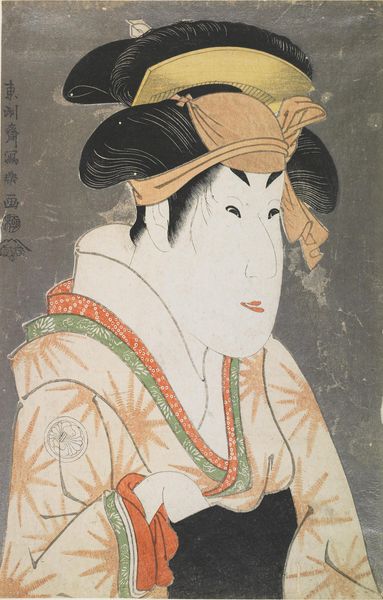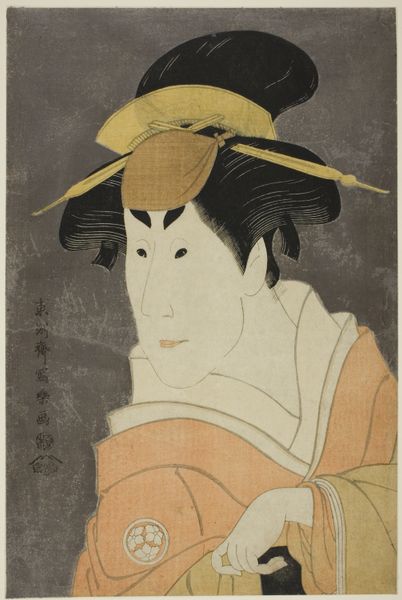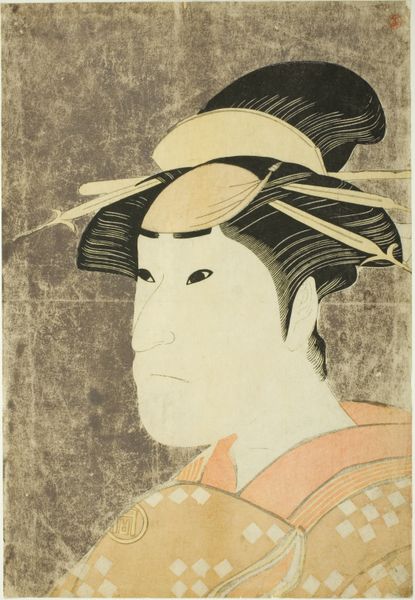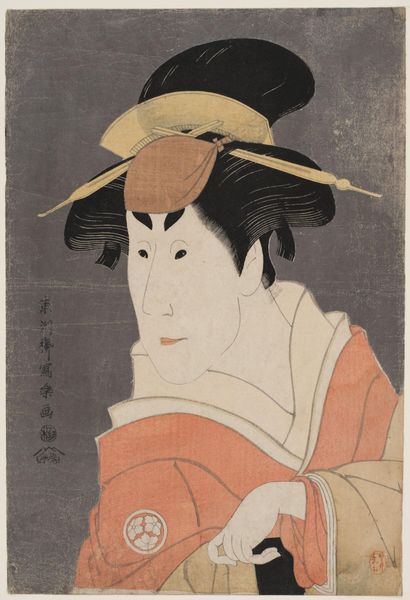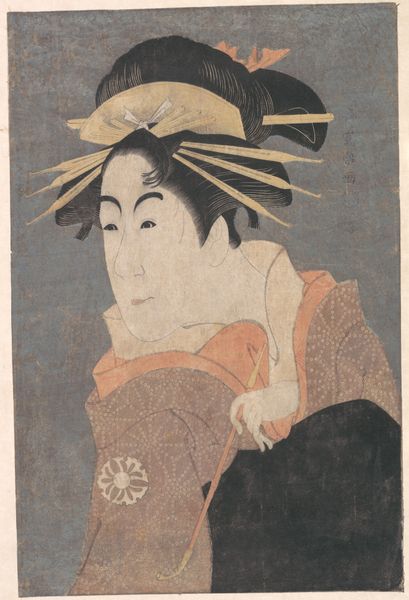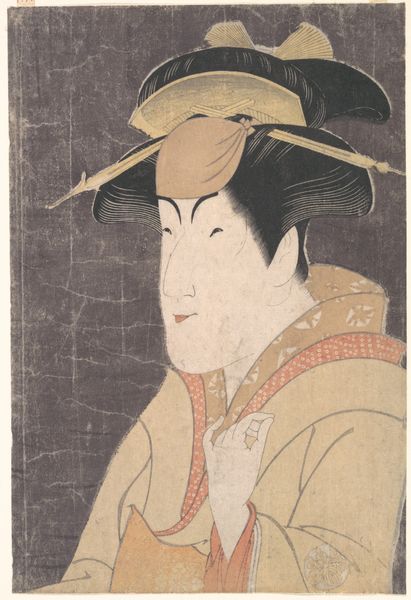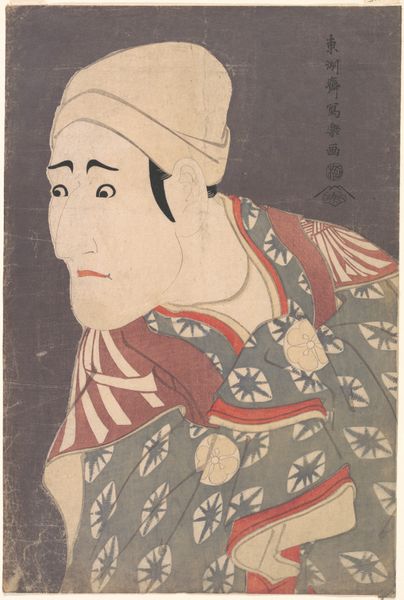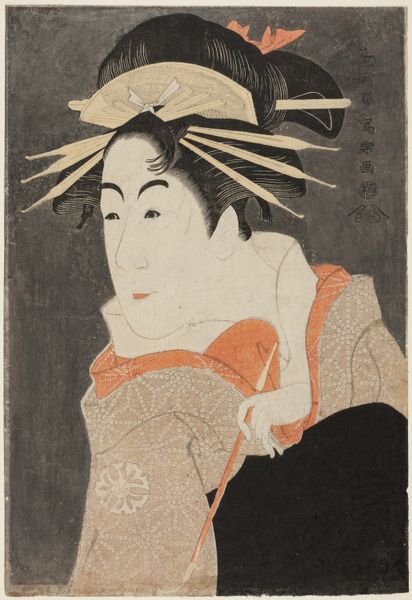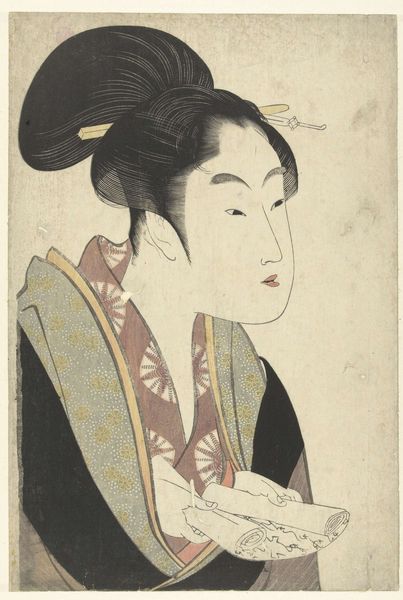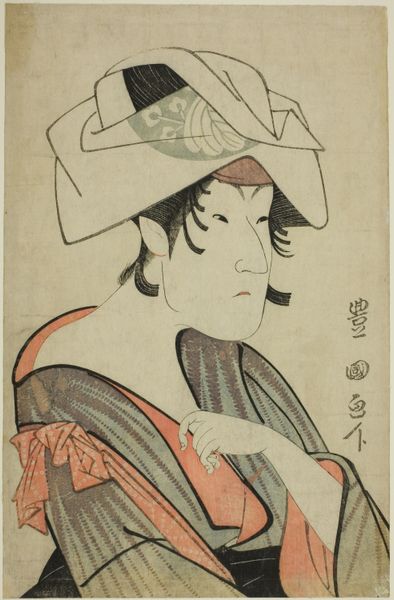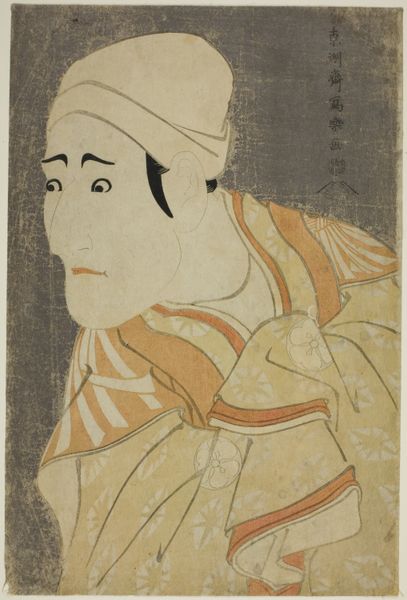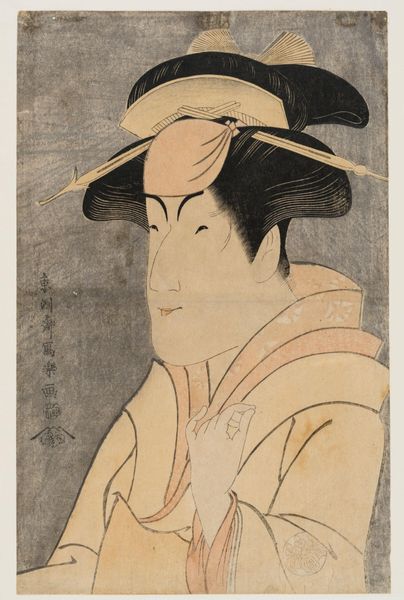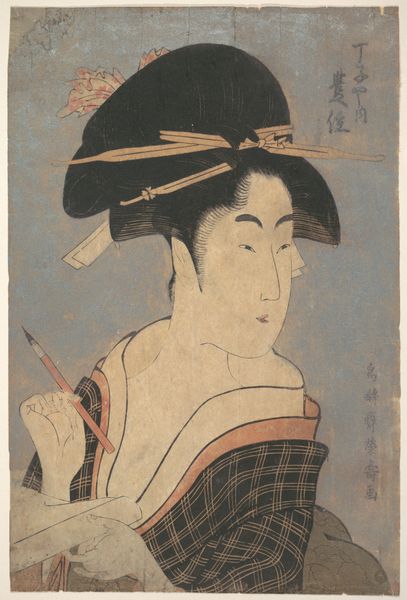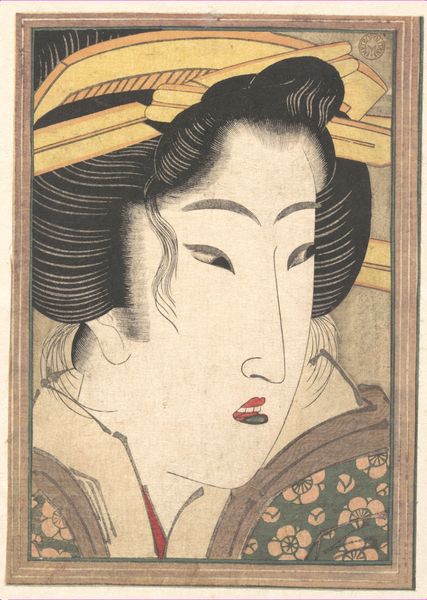
The actor Segawa Kikunojo III as Oshizu, wife of Tanabe Bunzo 1794
0:00
0:00
print, woodblock-print
#
portrait
# print
#
asian-art
#
ukiyo-e
#
figuration
#
woodblock-print
Dimensions: 36.6 × 24.6 cm
Copyright: Public Domain
Curator: We’re standing before a print by Tōshūsai Sharaku, crafted in 1794. It’s titled "The actor Segawa Kikunojo III as Oshizu, wife of Tanabe Bunzo". Editor: There's a stark theatricality to this. The composition, that striking background contrasting against the soft textures of the robe, projects such controlled tension. Curator: Indeed, Sharaku's portraits often captured the essence of Kabuki actors. The exaggerated features, a deliberate departure from conventional beauty, served to convey intense emotional states familiar to audiences of the era. Editor: Notice how the artist plays with lines and blocks of color. The upward slant of the eyes paired with a subdued lip makes the expression almost impossible to fully read. How might contemporary audiences have perceived that ambiguity? Curator: Given the social constraints of the Edo period, these images provided a valuable space for the audience to confront prevailing norms around class, gender, and performance. Ukiyo-e prints, like this one, blurred those boundaries, enabling cultural commentary. Editor: But the medium itself also carries meaning, right? It is not simply about picturing some reality but making use of flat, graphic, symbolic expression by woodblock, emphasizing the artifice inherent in depiction. Curator: Certainly. Woodblock printing in ukiyo-e was more than just a technical process, the very materiality and methods reflect the period’s socio-economic system involving collaborative efforts from artists to publishers and block carvers that drove production to a demanding public. Editor: Thinking about all the hands involved to disseminate prints across Edo highlights this artwork’s unique place. Beyond aesthetics and emotion, "The actor Segawa Kikunojo III as Oshizu, wife of Tanabe Bunzo" served both individual introspection and collective meaning-making in society. Curator: Ultimately, Sharaku provides insight into the past as much as he stimulates present viewers. The composition still pulsates, revealing complex nuances of art and existence centuries onward.
Comments
No comments
Be the first to comment and join the conversation on the ultimate creative platform.
